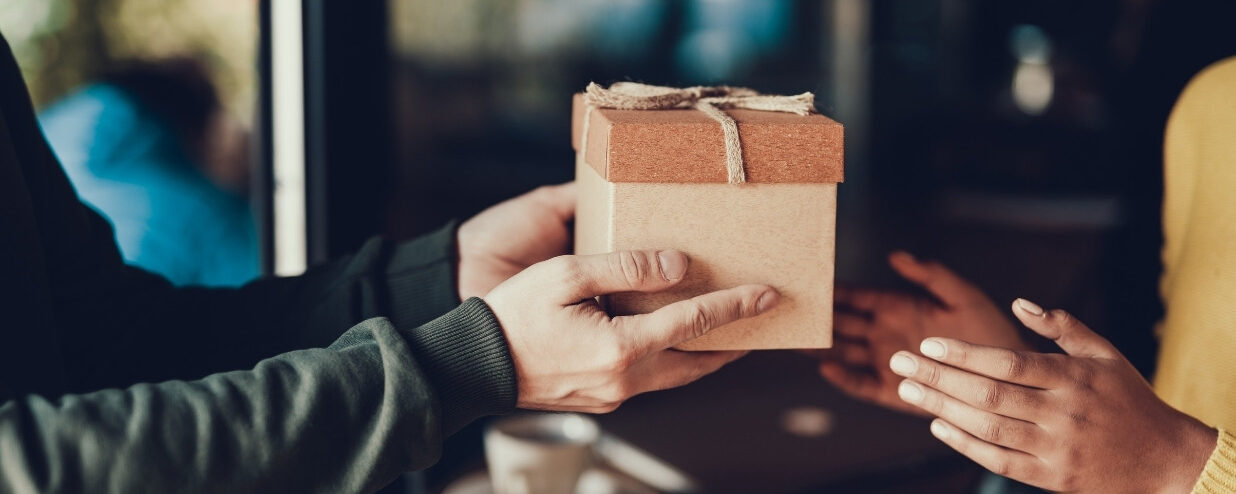Have you ever wondered what the term “omiyage” in Japan actually means? Most of you would know the term “souvenir” in English. It’s usually a physical item you buy from overseas to be kept as a memory of a particular place or event. Souvenirs bought are typically kept for you or given to others as a gift.
However, did you know that “omiyage” (おみやげ) in Japanese is a somewhat different thing? Although it translates to souvenirs, it does not actually refer to things you buy for yourself as mementos from overseas. In this case, omiyage refers to the act of giving gifts that you buy to your friends, families, relatives, and coworkers. These gifts are often snack-related, such as cookies, biscuits, sweets, cake, or mochi.
Omiyage shops are widely available in most tourist places of every country. This is where you’ll find a large variety of local items such as snacks, ornaments, and toys. Wondering what to buy for your friends and family after your trip to Japan? Here are some of the best Japanese souvenirs you need to get before you leave Japan!
Origin of Omiyage in Japan
Although the origin of the term “Omiyage” is unclear, it is said that the beginning of the custom began in association with the long pilgrimages on foot to the Shinto shrine. Whenever the pilgrims traveled, they would bring back evidence of their pilgrimage to their families. This usually came in the form of charms, rice wine cups, or other religiously significant items.
It was thought back then that bringing back gifts would grant them protection. The protection would also be transferred to whoever received the items that were brought back from the sacred trip. This was the beginning of the culture of “omiyage”.
Today, in Japan, as a way to thank your colleagues for supporting your work during your paid leave, you’d bring an omiyage to the office. It is an important and widely practiced tradition for people who visit overseas to return with omiyage from that particular place of visit. For example, if you visit London as a Japanese person, more likely you bring back a gift related to London, such as locally produced chocolate, chips, or biscuits.
Omiyage shops are widely available in most tourist places of every country. This is where you’ll find a large variety of local items such as snacks, ornaments, and toys.
Meaning of omiyage
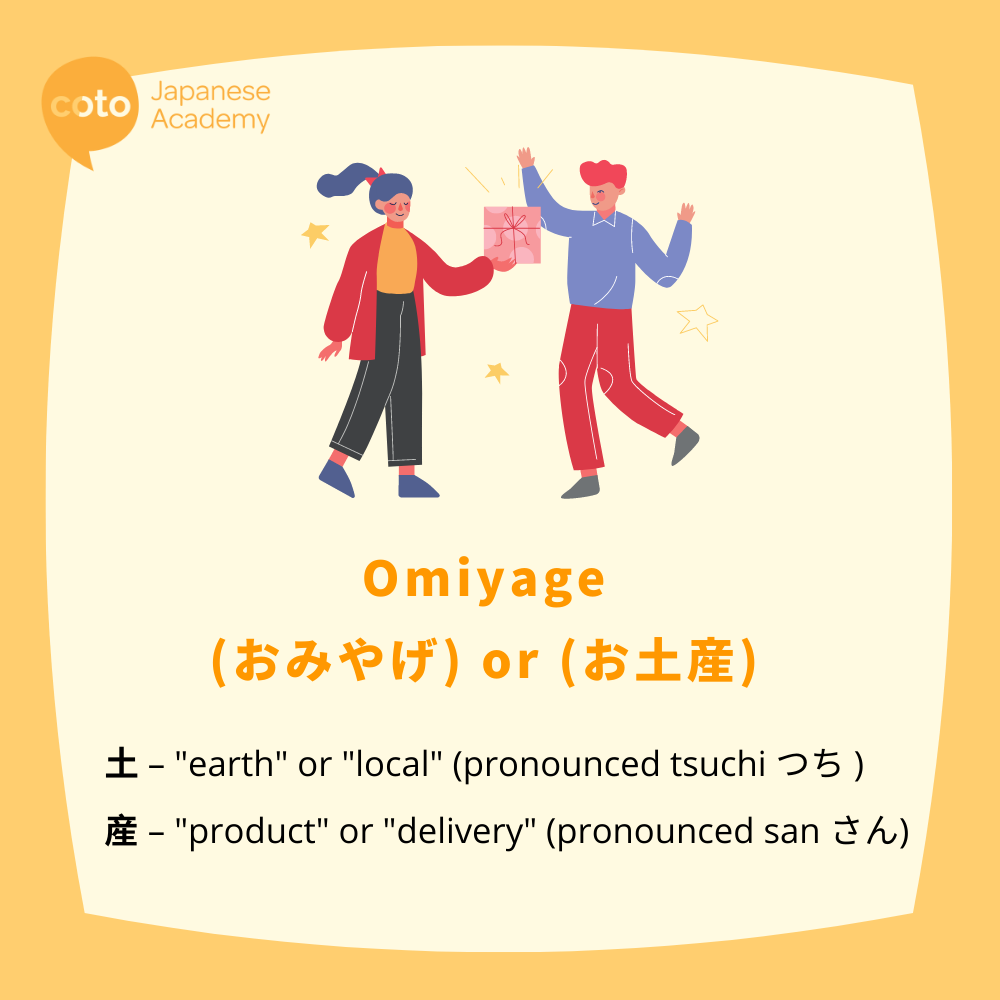
Omiyage (お土産) means “souvenir” or “gift,” especially one brought back from a trip for family, friends, or coworkers.
お土産 is made up of:
- 土 – “earth” or “local” (pronounced tsuchi つち )
- 産 – “product” or “delivery” (pronounced san さん)
- お – Polite & honorific, a prefix used in formal Japanese.
So literally, 土産 (miyage) means “local product of the land.” It refers to something from a specific place — a product of the area you visited.
Best omiyage for Japanese snacks
Japanese omiyage can be found almost everywhere, although it is more of what you want to present as gifts. You will be easily able to find omiyage in department stores, 100-yen stores, train stations, and tourist attractions. Picking out an omiyage often has its own rules as well.
For example, you would purchase something that is nicely wrapped and represents the region you visited, and is usually food-related. Remember the thing we said about giving omiyage to your colleagues? This is the reason why you’ll see a lot of omiyage individually wrapped. Each region — or prefecture in Japan — has its specialty. In Tokyo, for example, there’s the iconic Tokyo Banana. In Hokkaido, you’ll find a lot of sweet snacks with Yubari melon flavor and Shiroi Koibito.
Want to know more about the prefectures? We’ve made individual blog posts about prefectures in Japan, including features on Kanagawa, Osaka and Tochigi.
1. Tokyo Banana
Tokyo Banana is the ultimate Japanese confectionery that you can gift as an omiyage. Known for its delicious cream-filled sponge cakes and cute banana-looking design, it is easily available in all airports and major cities in Japan. It has a wide range of flavors, from its original banana flavor to coffee milk flavor. Some flavors are only available in certain cities. It is also beautifully wrapped in an eye-catching yellow gift box that features Tokyo Banana’s familiar logo.
2. Kit Kat
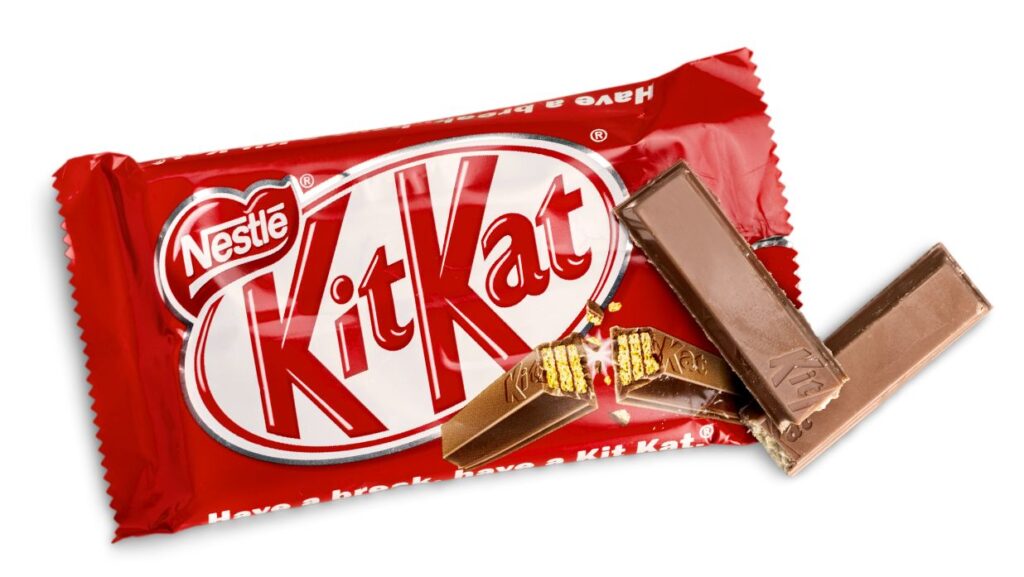
The world of Kit Kat in Japan is never-ending. From original flavors to rare region-specific flavors (who knew sake Kit Kat is a thing?), Kit Kat is one of the most common gifts to give as an omiyage. With over 300 flavors, the most popular Japanese-flavored Kit Kat flavors are probably matcha and strawberry cheesecake. They are very easily found around Japan, with shops like Don Quijote having a wide variety of flavors ready for you and your colleagues to enjoy!
3. Pocky
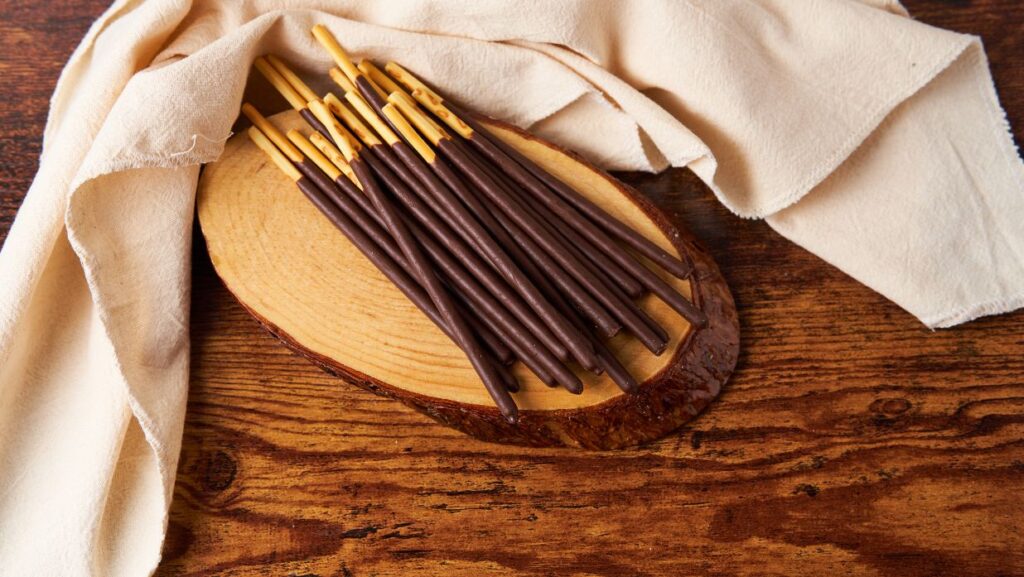
This delicious snack is long sticks of biscuits usually covered in different flavors of chocolate, and is one of the most popular Japanese childhood snacks in Asia. Their convenience and delicious taste make them an easy choice when it comes to deciding on an omiyage. There is even a Pocky Factory located in Saitama, Kitamoto city, that offers a free factory tour.
Pocky sticks are so well loved, there is even a day made out for them! Falling on November 11 every year, “Pocky Day” is well known by kids all around Japan. This is because the long sticks of Pocky look like the number 1. 11/11 also signifies 4 Pocky sticks.
4. Mochi
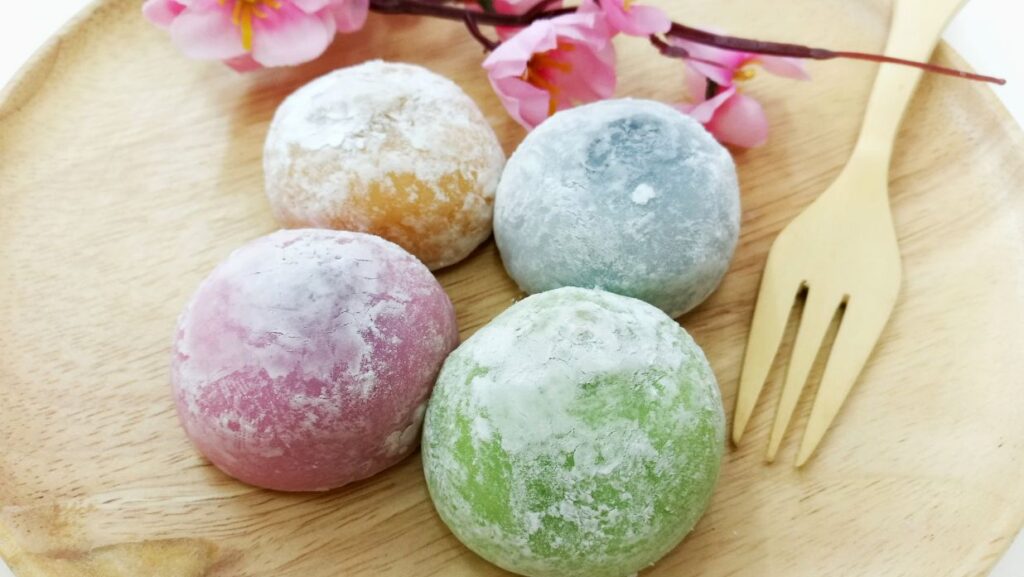
Mochi is an old traditional Japanese confectionery that features a soft, sticky dough pounded from sweet rice and often filled with different types of fillings. The original mochi usually has red bean paste fillings. The style and flavor of mochi vary greatly among the different cities of Japan. Specially flavored mochi are also made to match the particular season. Mochi of all types can be easily found in most major train stations, department stores, and tourist attractions.
5. Shiroi Koibito
Hokkaido is well known for its Shiroi Koibito cookies. The “white lover” cookies have white chocolate sandwiched between two slices of its signature vanilla-flavored biscuits that simply melt in your mouth. Each cookie is individually wrapped in an attractive presentation wrapper featuring an image of Mount Rishiri, one of Japan’s most beautiful mountains. Hence, making it one of the best gifts you can give to someone.
6. Royce
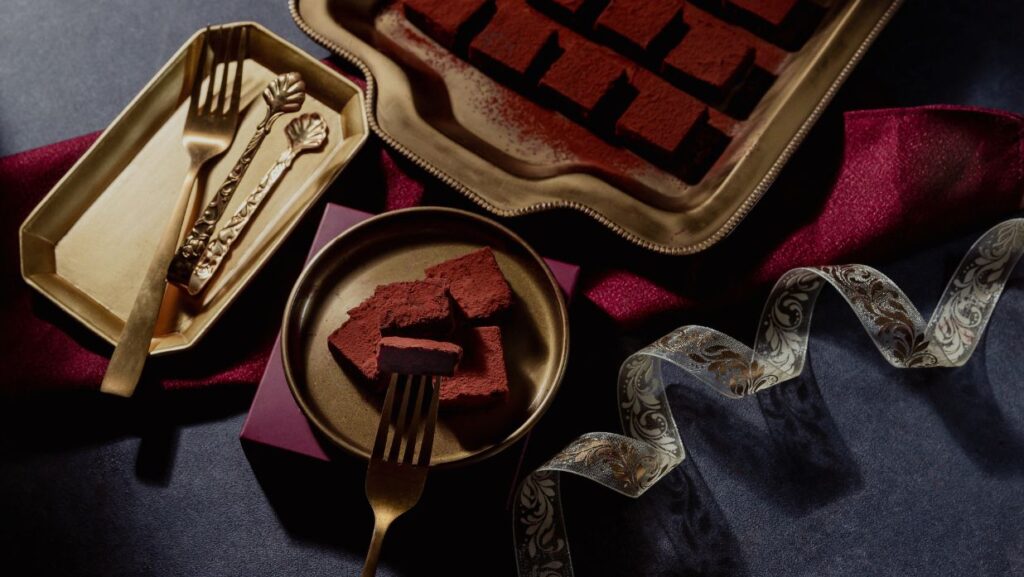
Royce’ is a premium chocolate maker from Hokkaido, Japan’s northernmost island, known for its rich dairy products and cold climate. This melt-in-your-mouth ganache-style chocolate, called Nama Chocolate, is made with fresh Hokkaido cream and dusted with cocoa powder. It’s rich, smooth, and slightly boozy in some flavors (like Champagne or Cognac).
Royce’ Nama Chocolate needs to be kept cool, so it’s not ideal for long trips. Instead, try their chocolate-covered potato chips — an unexpected but delicious mix of salty and sweet that’s perfect for travel.
7. Tokyo Milk Cheese Factory
Tokyo Milk Cheese Factory makes these amazing cookies that mix creamy cheese and rich milk with just the right touch of salt. Their Salt & Camembert cookie is a fan favorite — it’s buttery and sweet, with a little salty kick that keeps you coming back for more. Get the buttery langue de chat-style cookie sandwiching creamy camembert cheese-flavored white chocolate. The balance of salty and sweet is incredibly addictive.
8. Ichiran ramen
Yes, you can actually bring home the uber-famous Ichiran ramen! They sell instant version, either in cups or packs, with their signature rich pork bone broth and spicy red sauce. Sometimes these instant noodles aren’t available inside the restaurants themselves, so if you want to grab some, check out Don Quijote stores instead.
Japanese gift ideas besides confectionery
Although Japanese omiyage gifts are usually confectionery-related products, omiyage can also be just about anything. As long as the gift is special and represents the place visited, there are a lot of gift ideas to choose from. If you are not familiar with what to buy, you can ask the locals what the best omiyage item is.
9. Japanese traditional crafts
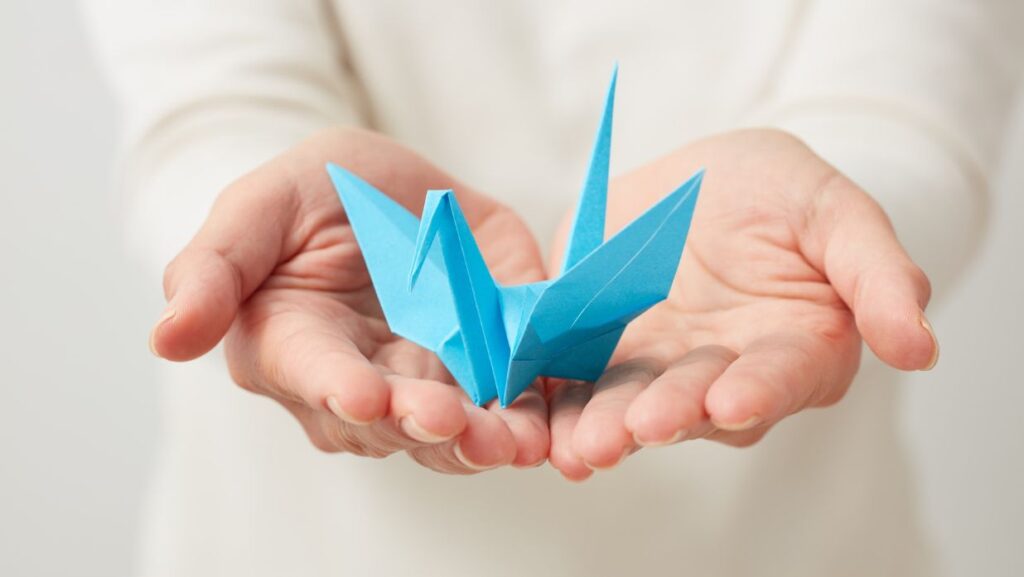
Japanese traditional crafts are one of the best omiyage gift ideas you can decide on. Known for its beauty and well-respected culture, Japanese traditional crafts are rich in history and of good quality. There is a wide range of Japanese traditional crafts you can choose from as gifts, such as origami paper, ceramics, traditional dolls, yukata, Japanese fans, and lanterns!
One typical traditional Japanese gift most tourists get is the “omamori”. It is a beautiful amulet that is meant for protection from all kinds of harm and is easily available for purchase at temples across Japan. They are used to wishing for health, longevity, relationships and love, safe birth, and more. This charm often makes great lucky gifts for those back home.
10. Cosmetics
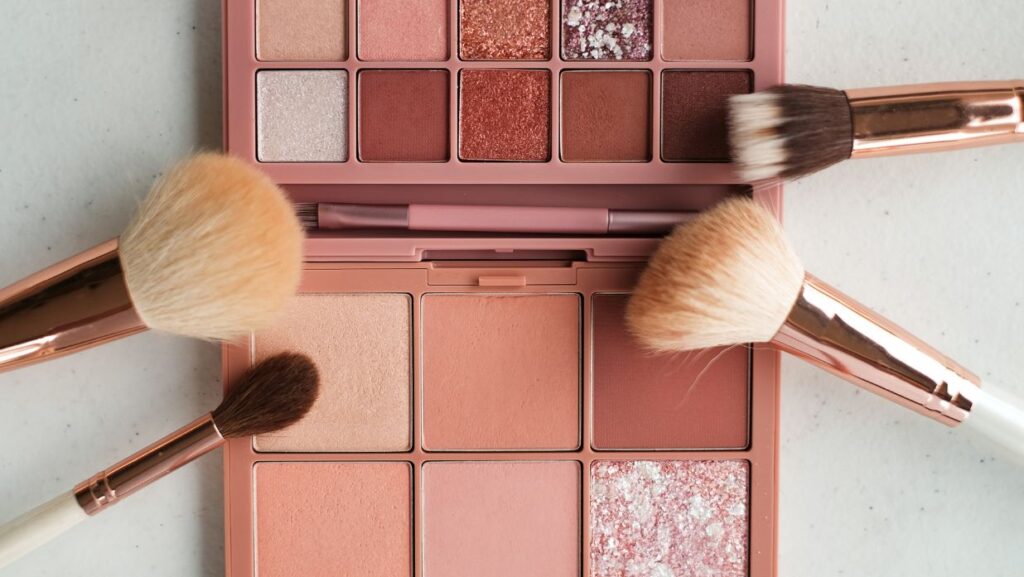
With Japan being known for its advances in technology, Japanese cosmetics have been gaining much popularity all around the world. Popular cosmetics options that you can purchase as omiyage are eye shadow, lipsticks, lip tints, foundation, and skincare. Many inexpensive cosmetic brands like CANMAKE, Kate, and CEZANNE offer trendy and useful makeup and skincare items. Drugstores like Matsumoto Kiyoshi or discount chain stores Don Quijote are usually the best places to buy affordable cosmetics.
11. Accessories
These can make one of the greatest gifts to give. Items such as necklaces, bracelets, earrings, and hairpieces have been becoming increasingly popular lately and Japan is also well-known for its beautiful accessories. These accessories need not be expensive, but rather nicely wrapped as a gift is more than enough.
12. Stationery
Known as the “world of stationery”, stationery shopping in Japan can often take up a whole day. There are multistory shops and shopping centers dedicated to selling all kinds of stationery. These are the types of gifts that you never knew you or your friend needed. If you are looking for more mature stationery options, you can try Itoya, Loft, and Tokyu Hands, where they have countless leather-bound diaries, planners, and notebooks that are stocked on their shelves.
Muji is well known for its quality (albeit minimalistic) stationery. For child-friendly options, you can visit the Disney Store in Tokyo. The Pokémon Store is also another themed store that you can consider visiting with large collections of Pikachu-themed pens, notebooks, or bags.
13. Matcha
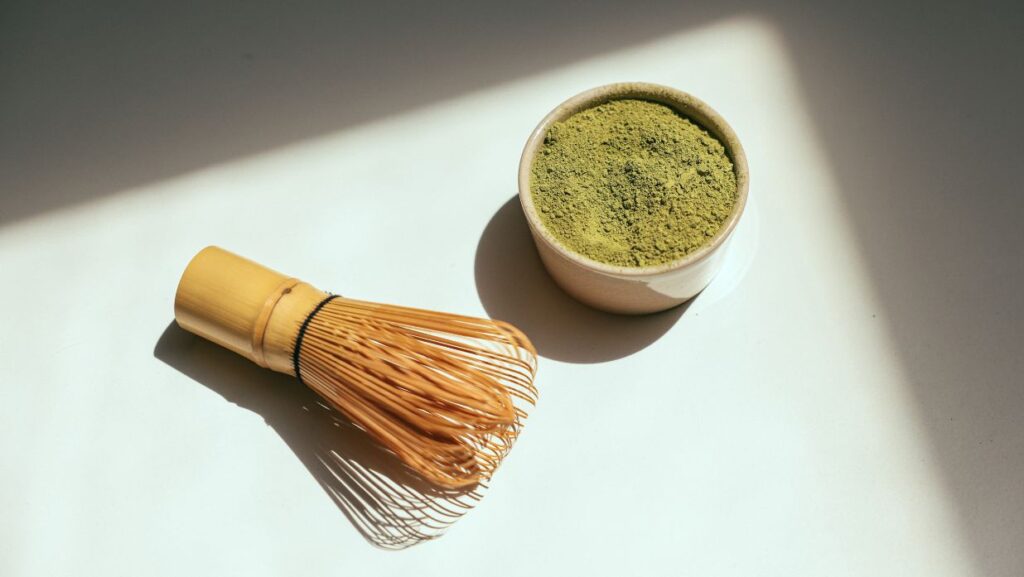
Have you really been to Japan if you don’t get some Matcha powder to bring back home? Japan is well known for its variety of tea flavors, and many souvenir shops provide shoppers with the opportunity to either ship it home or have a sealed container to bring it back to loved ones. Even if matcha is not necessarily up your alley, bringing home sencha or hojicha for others to try would be a fun activity to indulge in when you go back! They can be found at tea counters in department stores, or head to the Ginza area for the most infamous matcha/tea shops!
14. Character merchandise
Japan is known for its plethora of anime shows that are loved by many. In many shops, especially in areas like Akihabara or Ikebukuro, you’ll be able to find miniature versions of all of your favorite characters for relatively cheap prices. Bringing back your friend’s favorite Pokémon on a key chain would make them look that much cooler, while also being a special gift!
Japanese souvenirs to avoid
While Japan offers countless unique and memorable souvenirs, not all of them are practical—or appropriate—to bring home. Here are a few items you may want to avoid when shopping for gifts.
- Anything in a set of four: In Japanese, giving four or nine of anything is considered unlucky. This is because Four (四) and death (死) are both pronounced as shi while the number nine in Japanese is read as ku (九). Ku can be written as 苦, which means suffering and pain.
- Personal items: Opt for something more general that everyone can enjoy. Avoid clothing, jewelry, or anything too personalized, as it might not be to the recipient’s taste.
- Perishable items: Unless you know the recipient will consume them immediately, avoid fresh food or items with a short shelf life.
- Anything offensive: Avoid culturally insensitive items, religious symbols, or anything that could be misconstrued as offensive.
- Sharp objects: Scissors, knives, and other sharp objects are considered unlucky and should be avoided as omiyage.
- Items with regional limitations: If you’re traveling within Japan, be mindful of regional specialties and avoid giving something they can easily find in their hometown.
- Anything too bulky or heavy: Consider the recipient’s ability to carry the omiyage home. Choose something that’s manageable and won’t be a burden.
- Expensive gifts: They are inappropriate as they create an uncomfortable obligation for the recipient.
- Fake katanas or weapons: Replica katanas and other traditional weapons might seem like cool souvenirs, but they can cause serious trouble at airport security or customs. Even decorative versions may be classified as prohibited items in some countries. Instead, consider safer alternatives like mini katana letter openers or samurai-themed keychains.
- Combs: Combs are considered inauspicious due to their pronunciation resembling “suffering and death.”
Remember, the most important thing is to choose something that shows you were thinking of them and that represents your trip in a meaningful way.
Where to get Japanese souvenirs in Tokyo

With Tokyo being the heart of Japan and welcoming over hundreds of millions of tourists each year, here is a list of the best places in Tokyo where you can find omiyage that will make the perfect gifts as a little taste of your Japan experience.
1. Tokyo Station
Besides airports, Train Stations are usually a jackpot to purchase omiyage. Being the largest train station in Tokyo and serving over 450,000 passengers a day across its 28 platforms, Tokyo Train Station itself is home to many shops that sell different kinds of omiyage. Just like any other major train station in Japan, Tokyo Train Station is linked by underground networks that merge with the next-door shopping centers and commercial spaces.
Click here to download the e-map of Tokyo Train Station so you can plan your visit in advance.
People often spend a considerable amount of time choosing what omiyage to purchase, so you can shop in the train station while waiting for your train to come. In fact, there is a new specialty store that sells cheese confectionery in Tokyo Station, called “Now On Cheese,” that might interest you.
2. Harajuku
Harajuku is possibly the most visited area in Tokyo by tourists, where it is known for its bright colors and trendy shops, making it the perfect place to purchase omiyage in Tokyo. It is also home to many popular tourist attractions such as the iconic Meiji Jingu Shrine, Yoyogi Park, and the Ota Memorial Museum of Art. All these places offer shops that sell a wide variety of Japanese omiyage that you can bring home.
You can check out the Oriental Bazaar on your visit to Harajuku. The Oriental Bazaar is a huge shopping center dedicated to selling all kinds of Japanese omiyage related to authentic Japanese culture. You can easily find kimonos, ceramics, fans or accessories to purchase as gifts.
3. Nakamise Street, Asakusa
If you have already visited the Sensoji Temple, then visiting Nakamise Street should be your next itinerary. Located just next to Sensoji Temple, which is one of the most visited temples in Japan, Nakamise Street is filled with lots of Japanese omiyage gift shops. You will easily see many different shops selling Japanese snacks, traditional gifts, and accessories. All are perfect Japanese omiyage gifts. You can also venture into any of the covered shopping streets branching out from the main Nakamise street for more shopping options.
4. 100-yen shops
100-yen shops like DAISO, CanDo, and Seria should definitely be on the list for those looking to buy omiyage in Japan. These places are stocked with all kinds of omiyage at affordable prices and decent quality. They have items like fans, chopsticks, stationery, stickers, children’s toys, and cute ceramic pottery that would make good omiyage gifts.
DAISO is the most popular 100 yen shop in Japan for both Japanese and tourists alike. The shop has tons of authentic and unique Japanese-themed products, which are perfect for souvenirs.
Gift-giving etiquette in Japan
Omiyage in Japan is not just as simple as giving souvenirs. In fact, there are some basic rules you should learn and follow when wanting to give omiyage to your friends and family. Here are a couple of tips you can follow :
1. Make sure your gifts are nicely wrapped
In Japan, wrapping is often as important as the gift itself. This is because the wrapping you use showcases your sincerity for the gift. You want the wrapping to be attractive and presentable, such as being placed in a special paper bag from the store where you bought it. Often when you are buying your omiyage in a Japanese shop, the retail workers will wrap your gifts for free.
It is also important to keep in mind the colors that you should use for wrapping. You should avoid colors like red and black as they mean bad luck. Colors like green and purple are good choices to use as wrapping paper.
2. Do not offer individual gifts
You should avoid giving individual gifts at the office so as not to offend anyone. Individual gifts should be given privately instead. If you are giving gifts that have already been individually wrapped, you should instead place all the gifts on the communal table to allow everyone to see and choose from.
3. Presenting the gift well
You should present the gift using two hands (Not one!) to show respect. When presenting your gift, you should also not talk about how much the recipient is going to love it. In fact, people in Japan actually do the opposite by apologizing for the omiyage they are about to give. Just remember that giving of omiyage is a show of respect, appreciation, and good intentions to your friends and family when presenting the gift.
Here are some things you can say when giving omiyage so that you do not sound arrogant or disrespectful.
気に入っていただけると嬉しいです。
Ki ni itte itadakeru to ureshii desu.
“I hope you like it.”
その地域でとても人気のあるお土産だそうです。
Sono chiiki de totemo ninki no aru omiyage da sou desu.
“It was said that it was a very popular gift in the area.”
ほんの気持ちですが…
Hon no kimochi desu ga…
“It isn’t much, but…”
Be Ready for Japan Before You Arrive!
Are you getting ready to head out on your trip to Japan? Why not learn more to make the most of your visit? Or learn Japanese beforehand so you are ready to tackle Tokyo with your speaking skills? Coto Academy offers online classes or part-time classes based on what your schedule permits. Get ready to immerse yourself in Japanese culture and the language together!
Fill out the form below for a free level check and consultation!
Japanese Omiyage FAQs
What is Japanese omiyage?
“Omiyage” (おみやげ) in Japanese is somewhat different thing than just souvenirs. Although it translates to souvenirs, it does not actually refer to things you buy for yourself as mementos from overseas. In this case, omiyage actually refers to the act of giving gifts that you buy to your friends, families, relatives, and coworkers. These gifts are often snack-related, such as cookies, biscuits, sweets, cake, or mochi.
What omiyage should you give in Japan?
For example, you would purchase something that is nicely wrapped and represents the region you visited, and is usually food-related. Remember the thing we said about giving omiyage to your colleagues? This is the reason why you’ll see a lot of omiyage individually wrapped.
How do you give omiyage?
In Japan, wrapping is often as important as the gift itself. This is because the wrapping you use showcases your sincerity for the gift. You want the wrapping to be attractive and presentable, such as being placed in a special paper bag from the store where you bought it. Often when you are buying your omiyage in a Japanese shop, the retail workers will wrap your gifts for free.
What is omiyage etiquette?
You should present the gift using two hands (Not one!) to show respect. When presenting your gift, you should also not talk about how much the recipient is going to love it. In fact, people in Japan actually do the opposite by apologizing for the omiyage they are about to give.
What is omiyage etiquette?
You should present the gift using two hands (Not one!) to show respect. When presenting your gift, you should also not talk about how much the recipient is going to love it. In fact, people in Japan actually do the opposite by apologizing for the omiyage they are about to give.
Like what you read? You might be interested in:
